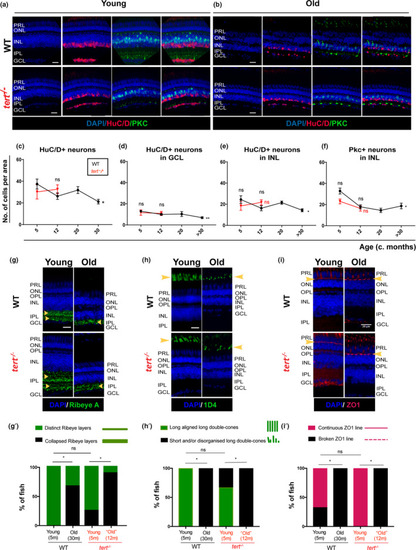FIGURE 2
- ID
- ZDB-FIG-220420-37
- Publication
- Martins et al., 2022 - Müller Glia maintain their regenerative potential despite degeneration in the aged zebrafish retina
- Other Figures
- All Figure Page
- Back to All Figure Page
|
Zebrafish retina undergoes neurodegeneration with ageing, independently of telomerase. The central retina immunolabelled with HuC/D and PKC (amacrine in magenta and bipolar cells in green, respectively), in both WT and |

